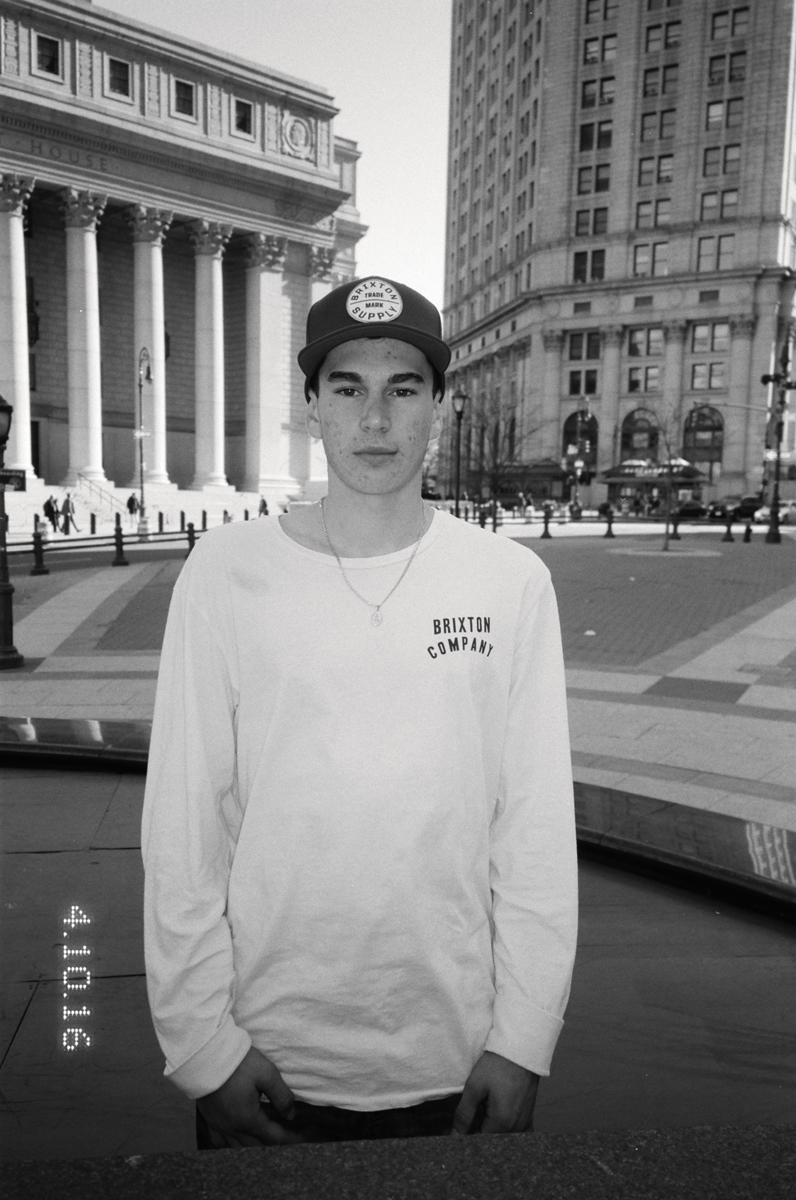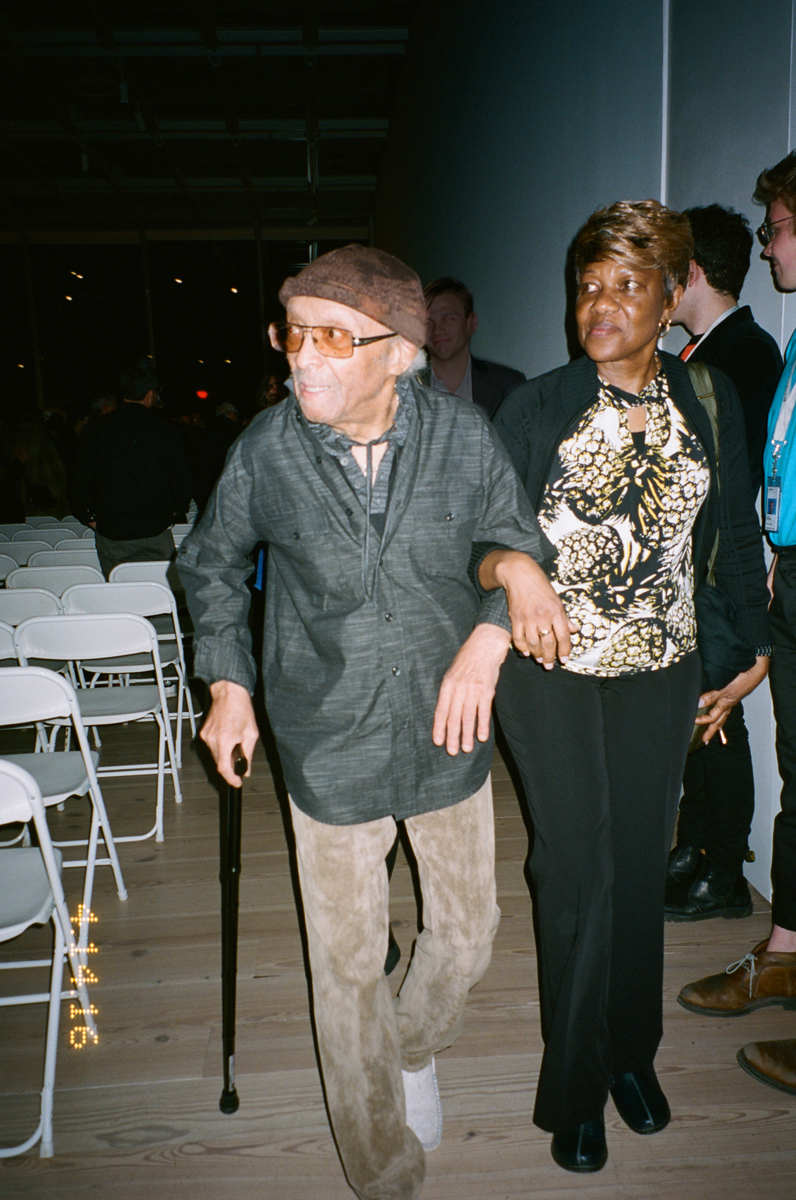

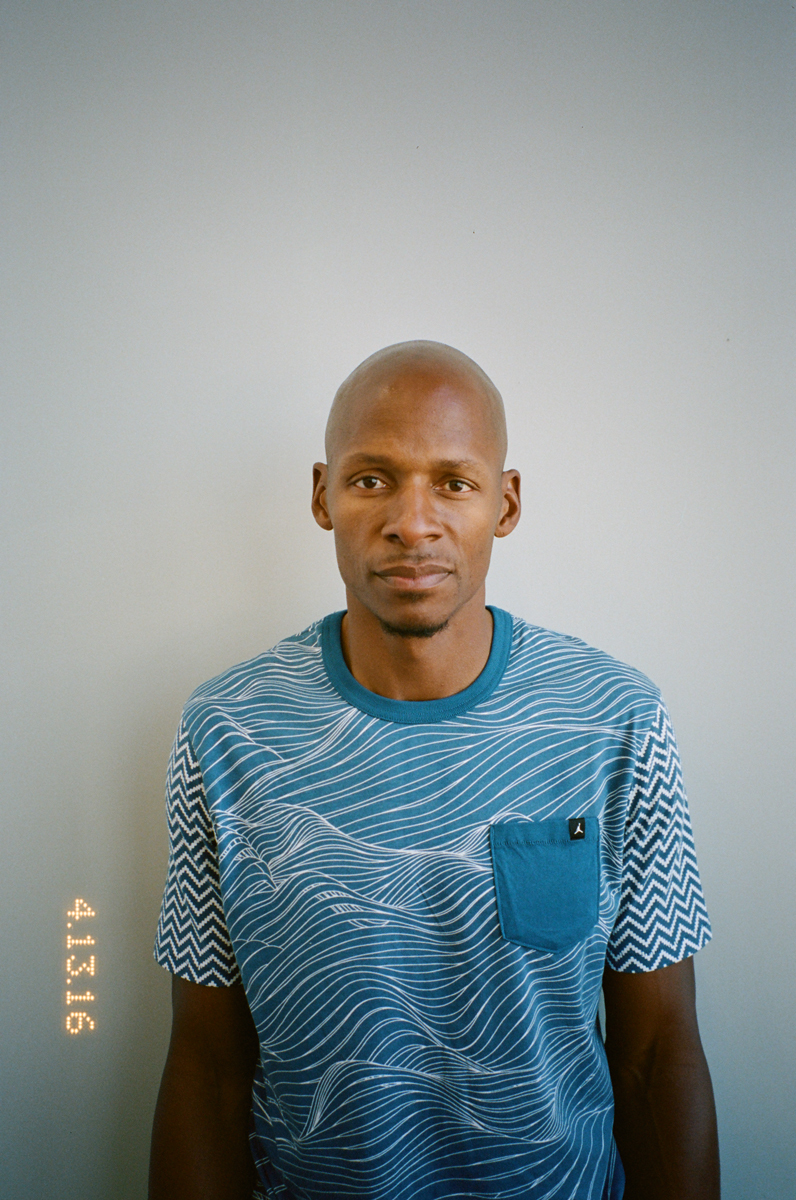
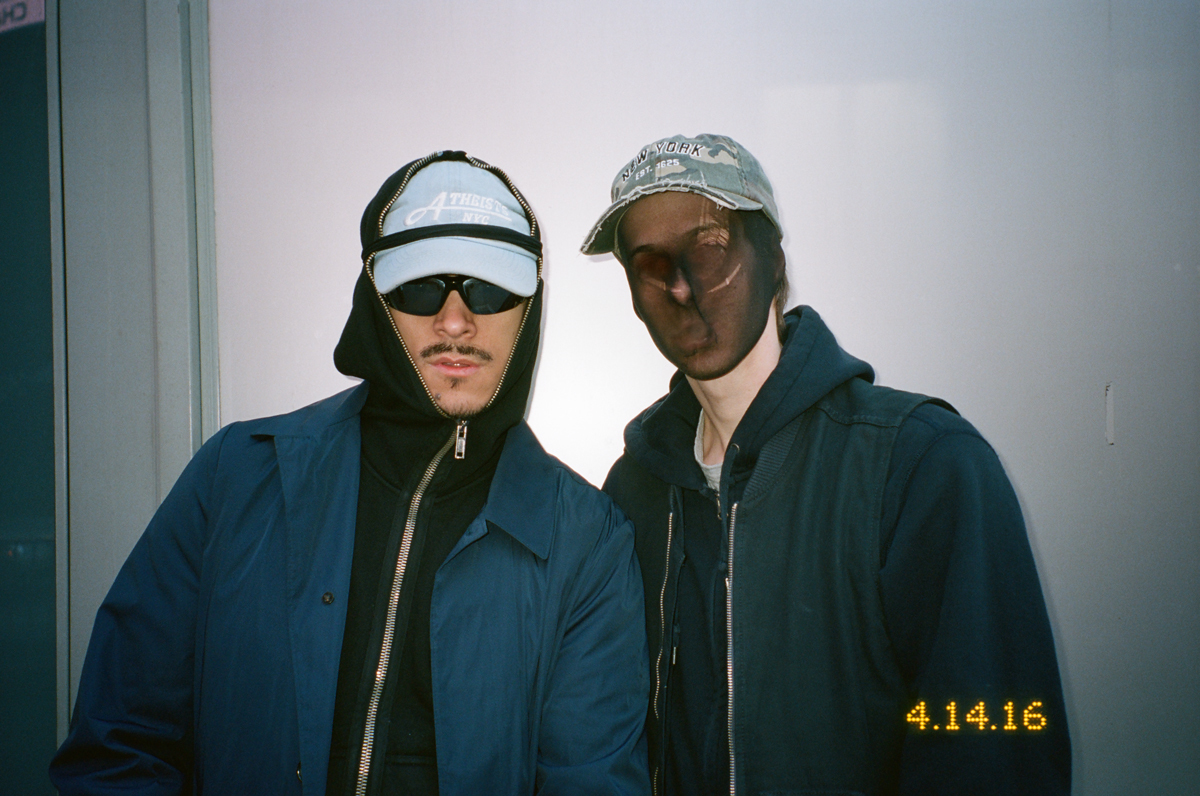
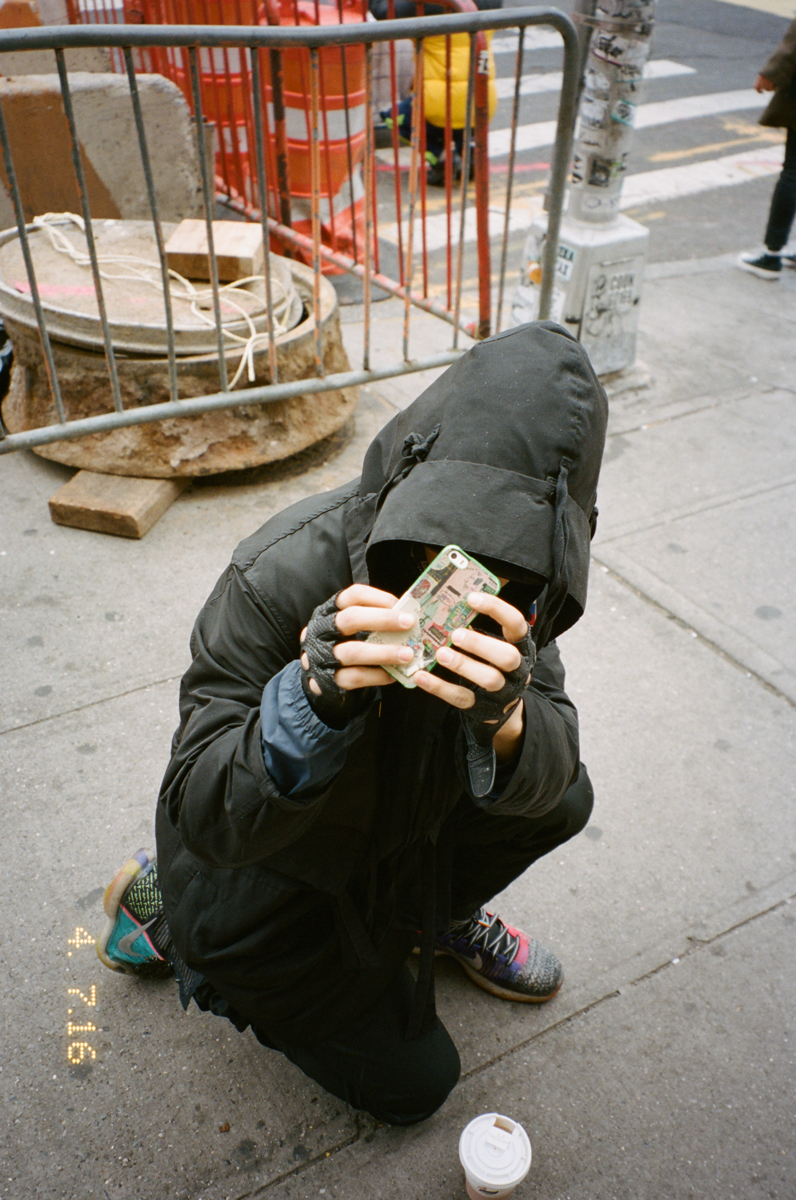





“I’m more into what I did last week than what I did last year,” states photographer Ari Marcopoulos. He is always moving, never looking back, searching for a perfect moment, a perpetual moment machine persistently investigating the world around him, more-often-than-not through the lens of his camera. Emigrating to New York from Holland in the early 80s, where he has mainly been based ever since, his photography is woven into the culture and documentation of that ever mutating and influential city.
The early part of his career was spent assisting both Andy Warhol and Irving Penn. From then, portraiture became his raison d’etre. Recording scenes, outsiders, artists, celebrities, and the landscape around him — often identified by a glowing time code in the corner of the picture — his raw, natural snapshot style explicitly captures his instant observations. Amongst these are intimate portraits created at extraordinary points in sub-cultural history: snapping Basquiat sitting in the bath; his documentation of the Beastie Boys writing, recording and touring between Check Your Head and Ill Communication (collected as Pass The Mic 1991-1996); and photographing Spike Lee on the set of Do the Right Thing. Numerous books, photocopied zines, catalogues, prints, and exhibitions have established him; he wonders with a laugh if there was anyone in the world who could possibly own all of his published work.
A pivotal moment came when a gang of skateboarders caught his eye while cycling under the Brooklyn Bridge in the early 90s. Down by the legendary Brooklyn Banks skate spot he found a way to connect with these kids through a friend who knew skateboarder Jeff Pang. The doors opened, and he began capturing this movement, which would turn out to be a watershed in New York’s history. This was around 93/94 and the same time Larry Clark was also beginning to film Kids. Ari’s portraits of the late Harold Hunter and Justin Pierce are amongst some of his most iconic, and have become an inextricable part of streetwear label Supreme’s DNA.
Supreme would open its doors on Lafayette in 1994, and eventually Ari’s collages of these images would decorate several of its stores. “This period that I was taking pictures of the skateboarders in New York seems to be a very important part of history for many people. I think James [Jebbia, Supreme’s founder] appreciates those pictures too, but I think for him it also goes back to the roots of that store and a reminder of where it all came from.” Supreme later turned these images into a capsule collection of hooded sweatshirts, while they were later published as a collection for OHWOW, in his book, Stoopz.
There is an emotive and intimate connection in each of his photographs, a deft rawness that is never exploitative or voyeuristic, and always pulls into your mind the process behind the setting and his approach to each of his subjects. For this issue of i-D, he has pulled together a portfolio of recent portraits with the magazine in mind. “At first I had this idea, i-D magazine, fashion magazine, casting, you’ve got to find the right groovy person, but then I thought I’ve just got to let it come to me and be more spontaneous about who and what I photograph.”
Talking about his approach and the impulse which drives him to ask specific people to have their picture taken, he elaborates: “A lot of people usually like the attention and they understand that you ask for a reason but it’s still weird. Also I don’t want the pictures to be totally dictated by surface, because they are going to add something to the language of fashion or to the language of style. Sometimes you might as well photograph someone because they have the opposite, they have a certain aura or calmness or a certain disregard of all of that, and that makes them interesting. It’s a weird battle.”
This fall, publisher Rizzoli will release a new survey of his work, entitled Not Yet (“And I named it that to cause confusion. ‘Is that book out yet?’ ‘Not Yet.'”) Which collects images curated by ten different people, including family, friends, artists, and critics. Amongst the curators are his sons Cairo and Ethan, both of whom have been ongoing features in Ari’s work — from their birth, to their grazed knees, to covered in calamine lotion with chicken pox, to skateboarding, to the young men aged 24 and 20 that they are now. When asked whether they chose the pictures of themselves, Ari replies, “My eldest son chose some pictures of his brother, and some pictures from a cross country trip we did together. My other son, he didn’t really pick any pictures of people; it was mainly moody landscapes.” Their presence in his photography feels so personal and biographical and most closely felt in his seminal work Even the President of the United States Sometimes Has Got to Stand Naked; you almost feel as you know the pair. “Now they’re 24 and 20, there’s less of that, but they appreciate all of those pictures. At the time I think it was a little hard on them, but now I think they like them a lot more. It was never meant to be that biographical, they’re more about archetypes or things that happen in your life.”
Gucci’s Alessandro Michele commissioned Ari in to shoot his fall/winter 16 lookbook, a rare journey into the luxe world of high fashion. Marcopoulos brought a gentle dose of his reality to Michele’s sublime runway fantasies. Recently released as a book with IDEA, Epiphany brings together looser outtakes from the shoot, and he explains the project quite straightforwardly: “Yeah it was easy. They just wanted me to take pictures of some models in their clothes, and I went about it like I go about taking my pictures.”
While much of Ari’s work has centered around the vitality, energy, exuberance and vulnerability of youth, Ari becomes animated when he discusses a concert he recently saw which paired the 86-year-old free jazz pianist Cecil Taylor with Japanese contemporary dancer Min Tanaka. Enamored with the interplay and communication between their music and their movement, Ari delightedly explains, “we just knew we witnessed something important. I took a snapshot of Cecil leaving. If it comes out maybe I should put that in the article, and not just have young folks.” Which, while Cecil Taylor may be 86, is a reminder that youthfulness is not dictated by age, but by a state of mind. Ari’s art is simply capturing that timeless attitude in everything he sees.
Credits
Text Jeremy Abbott
Photography Ari Marcopoulos
